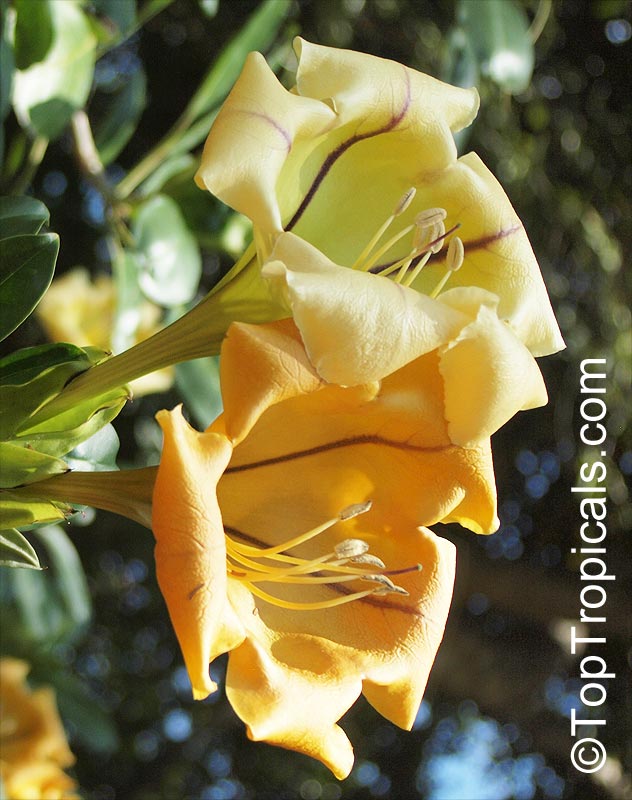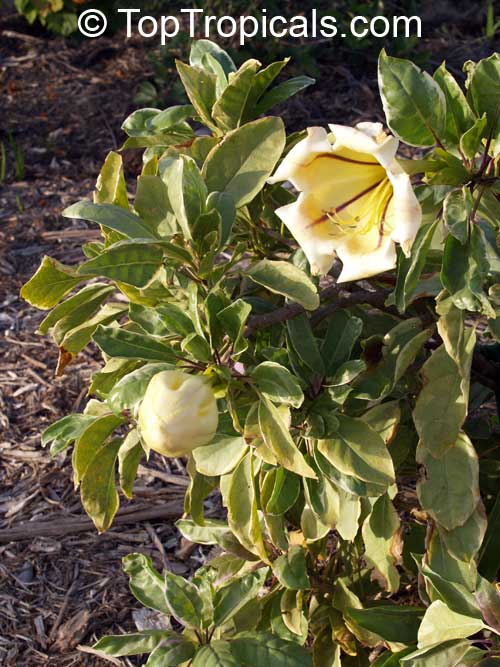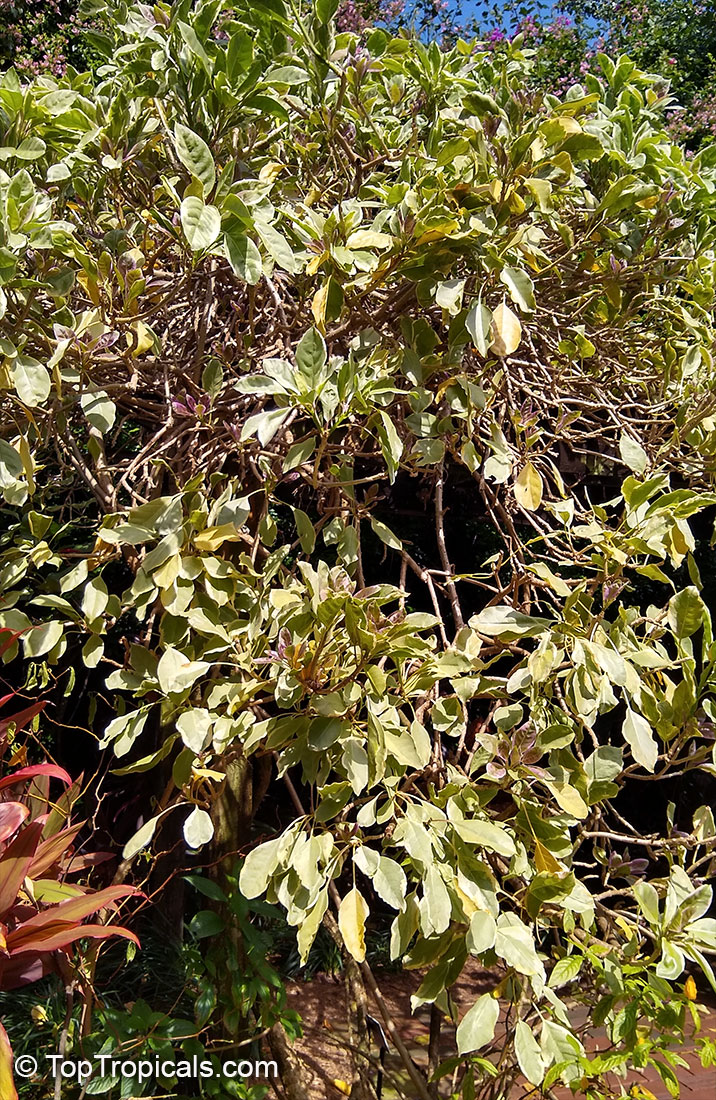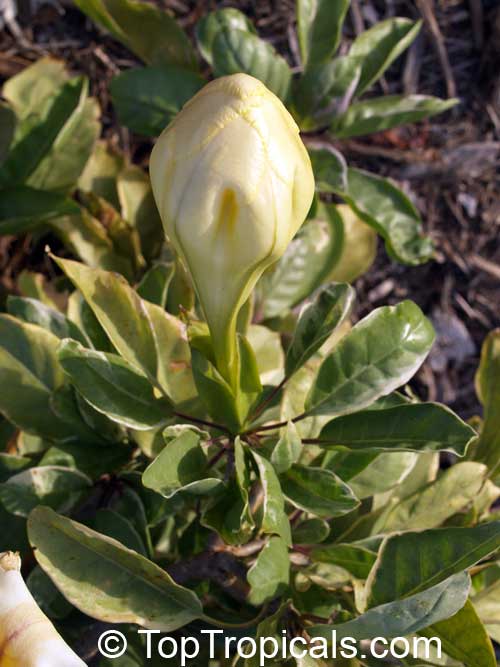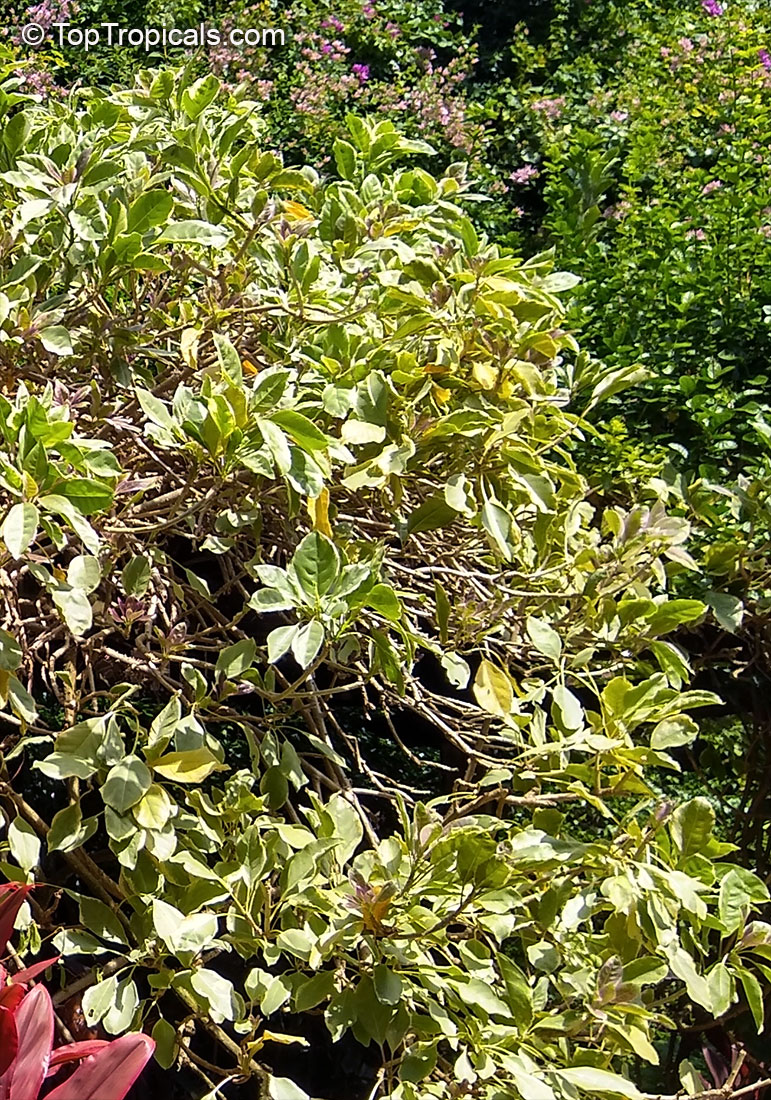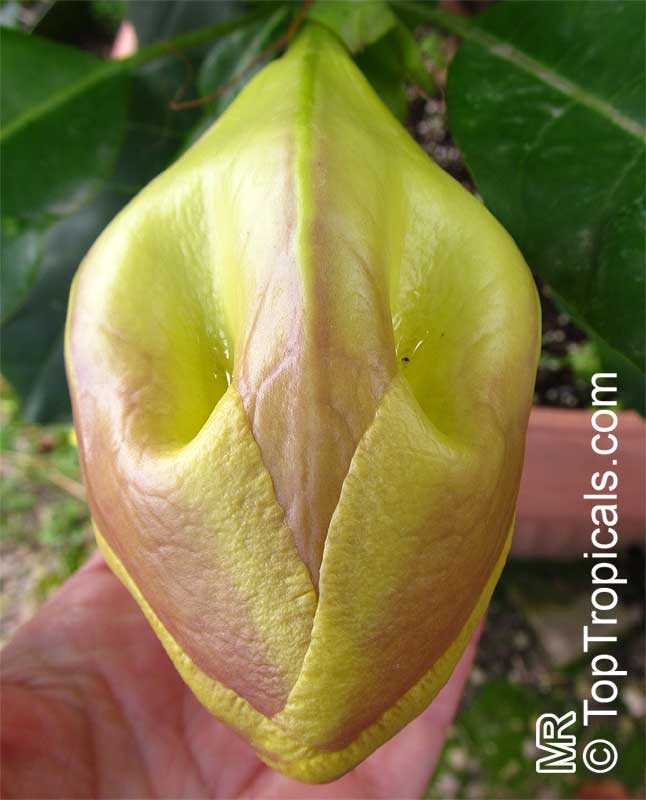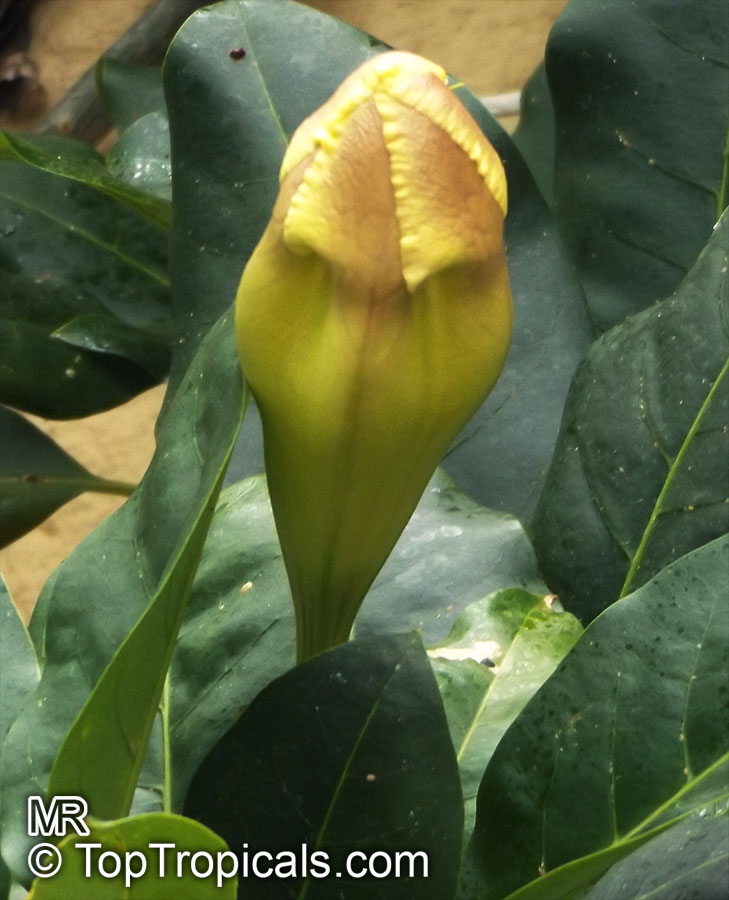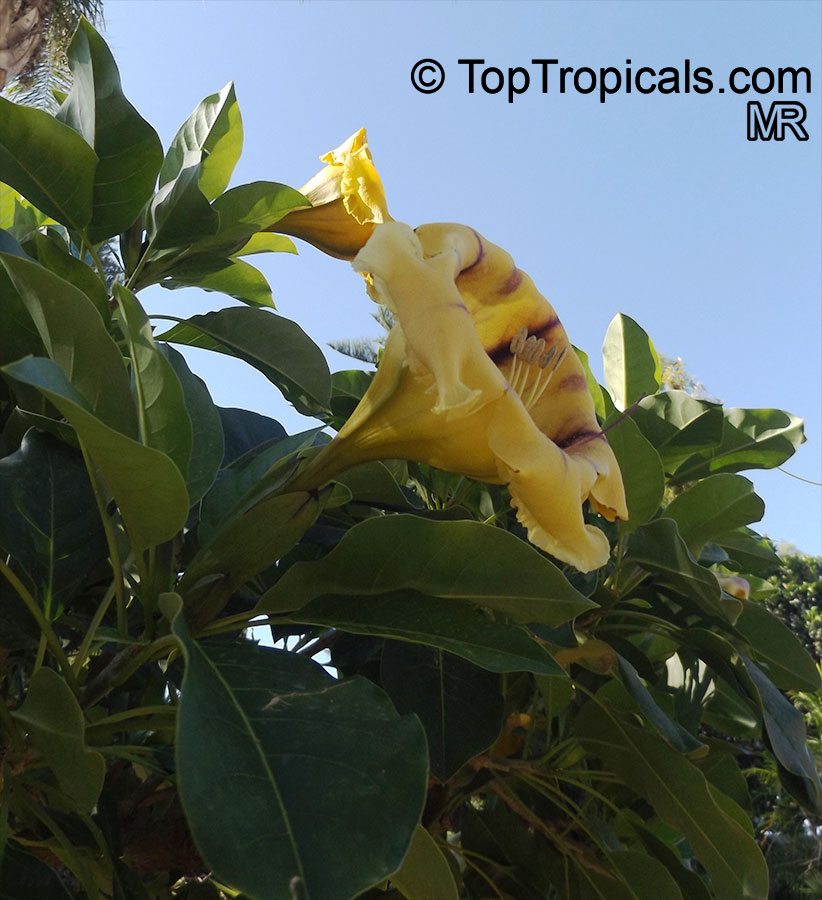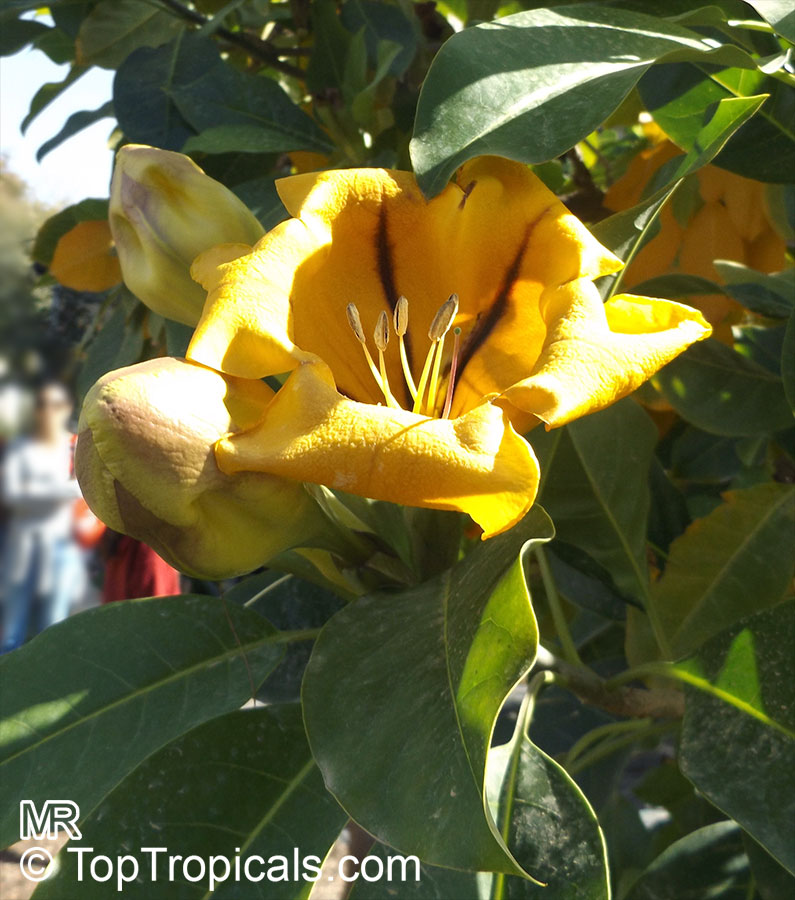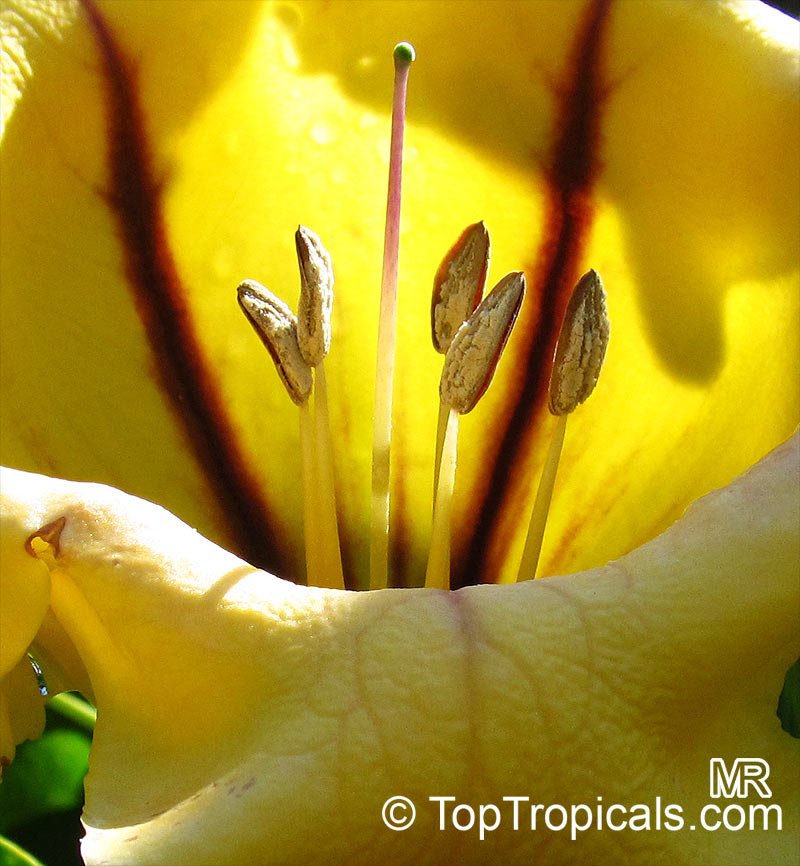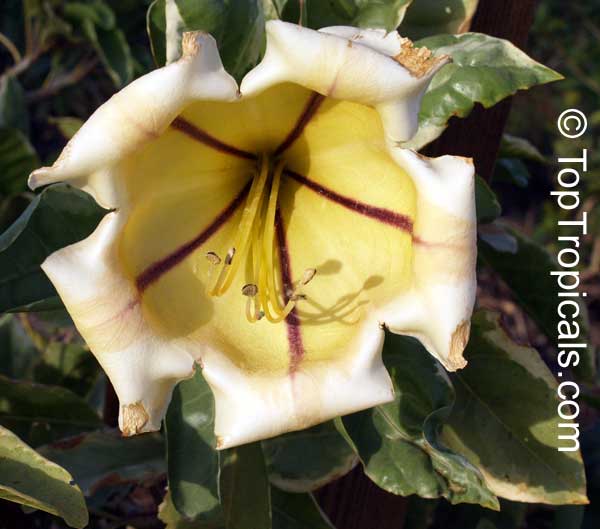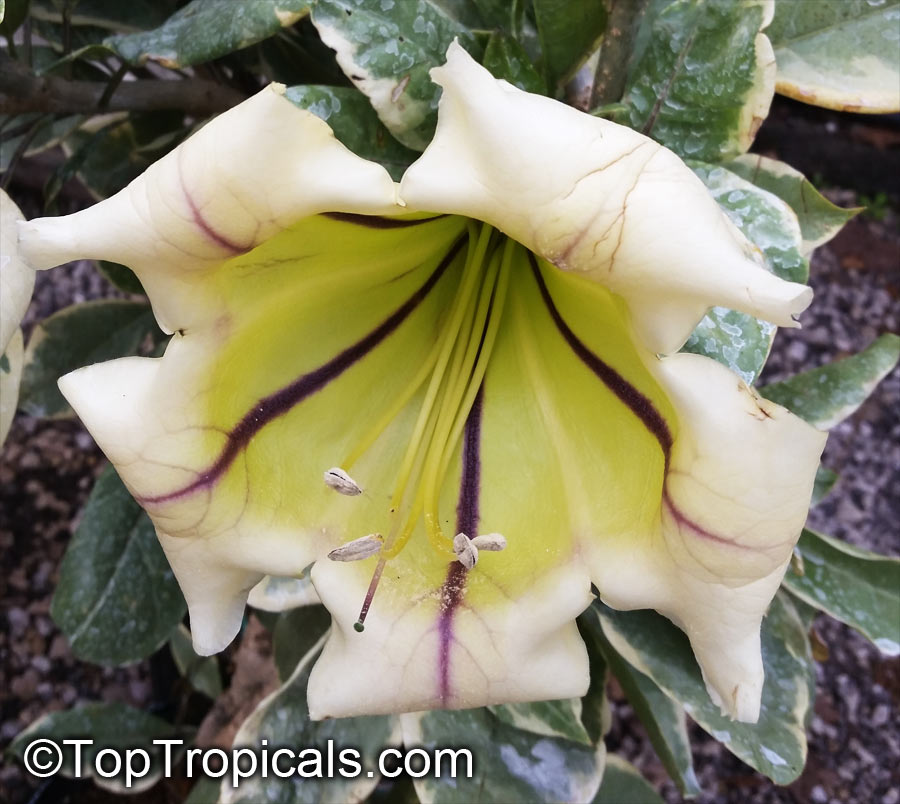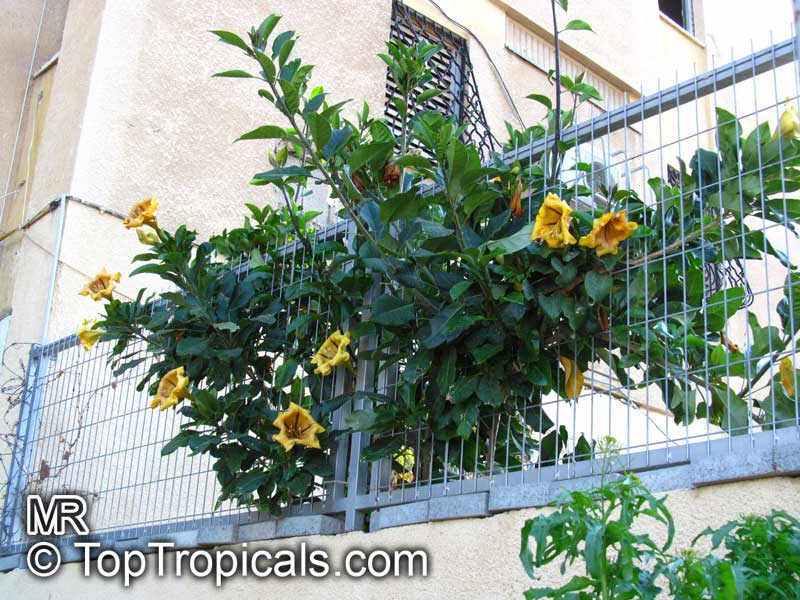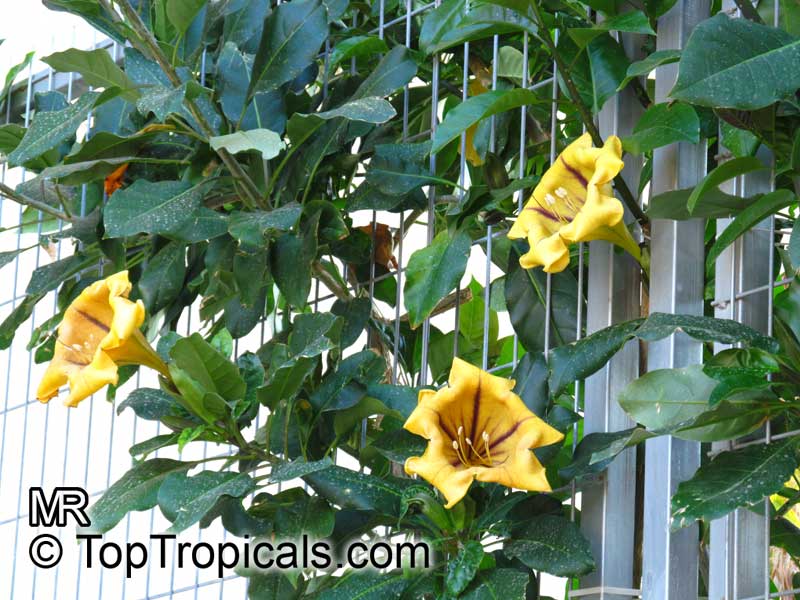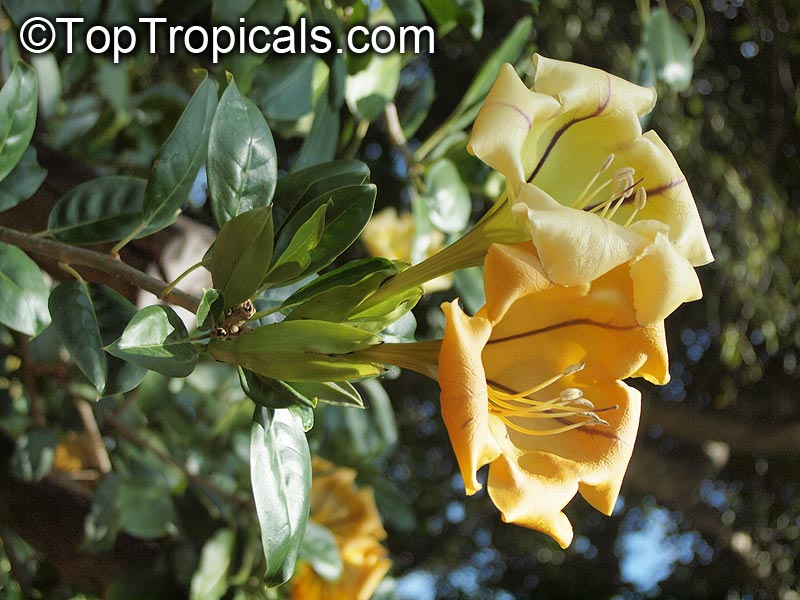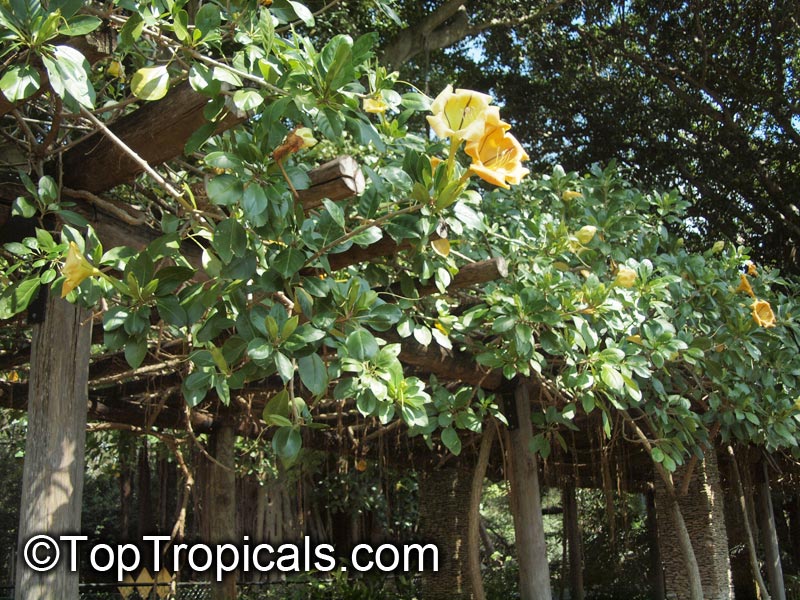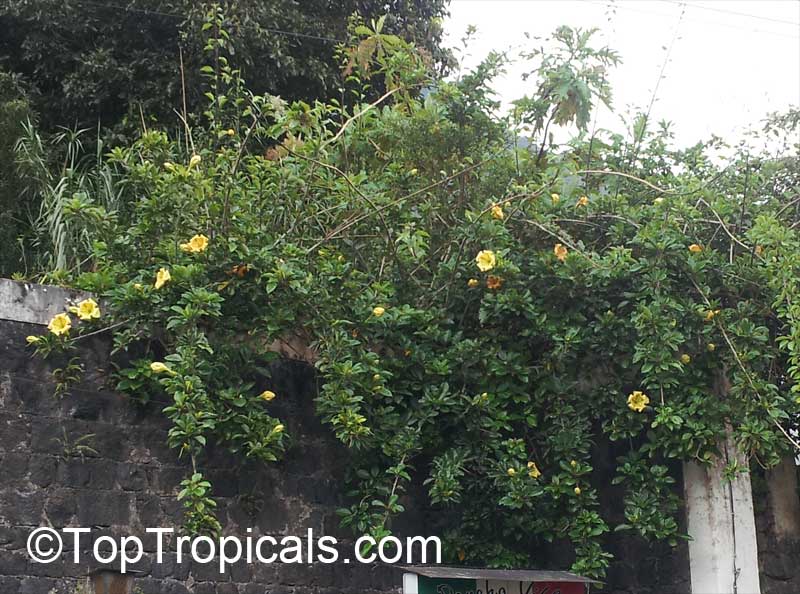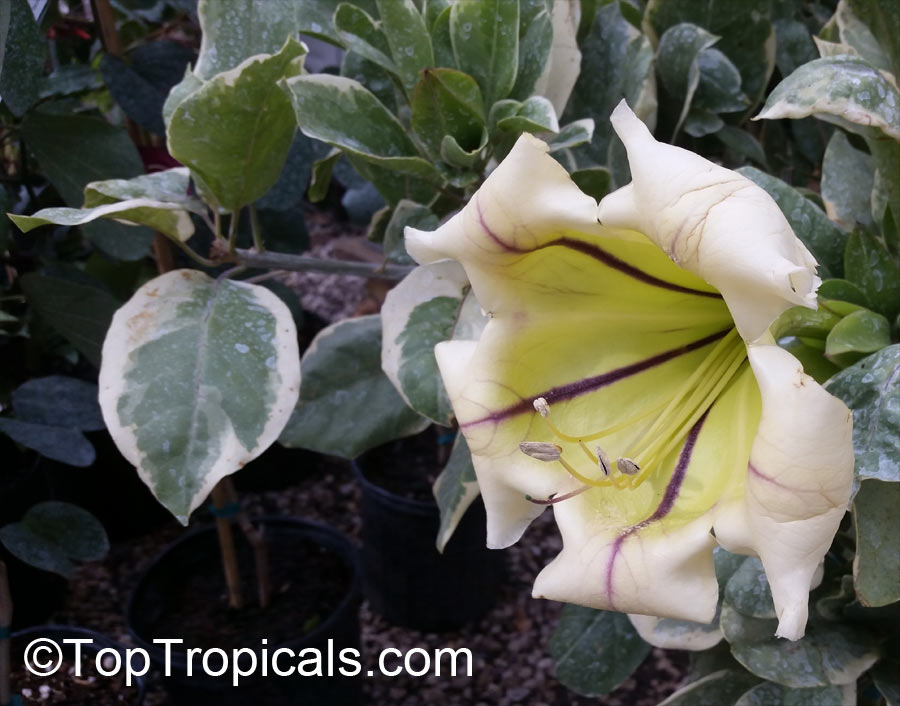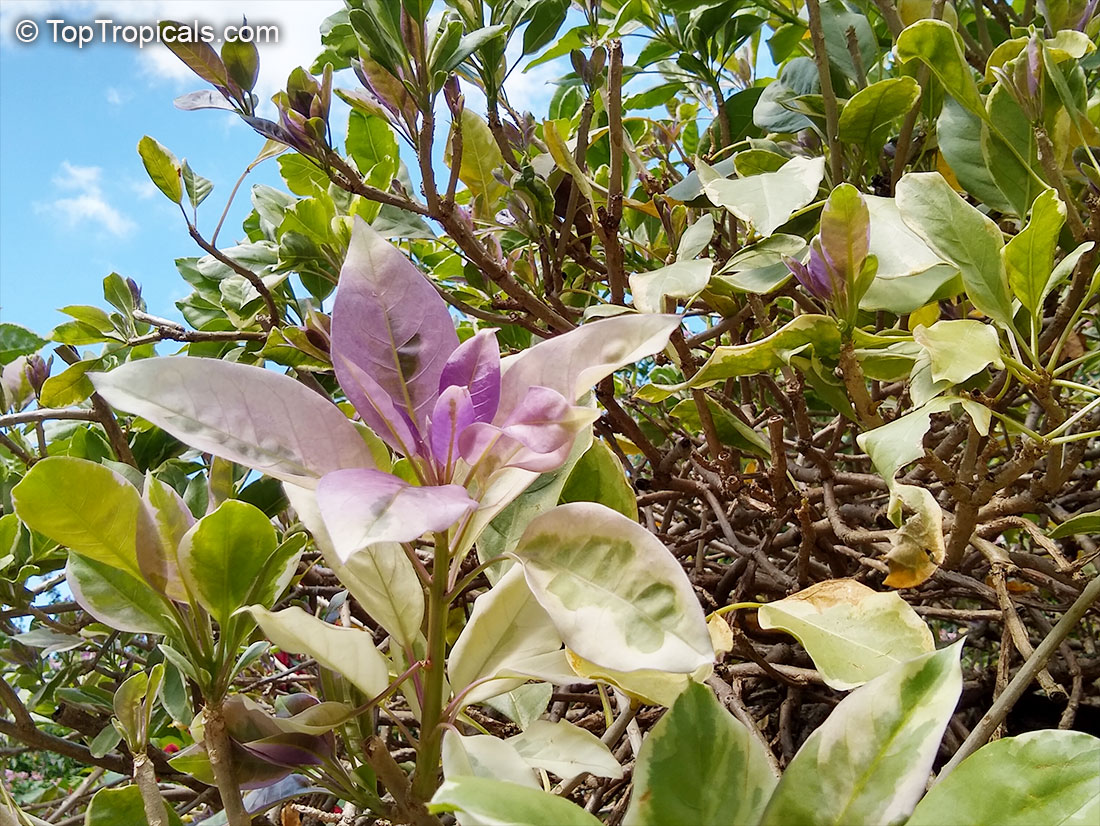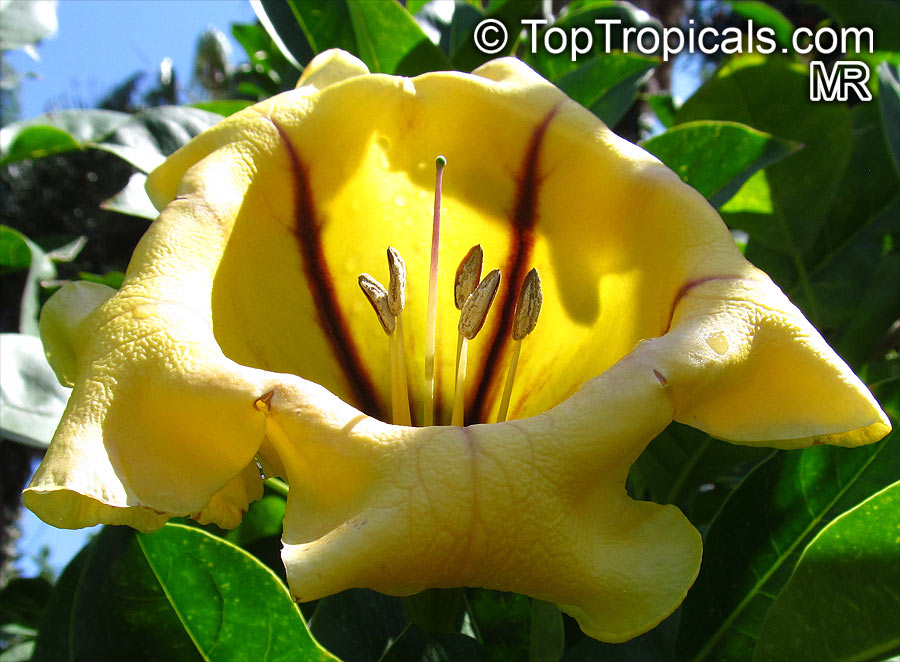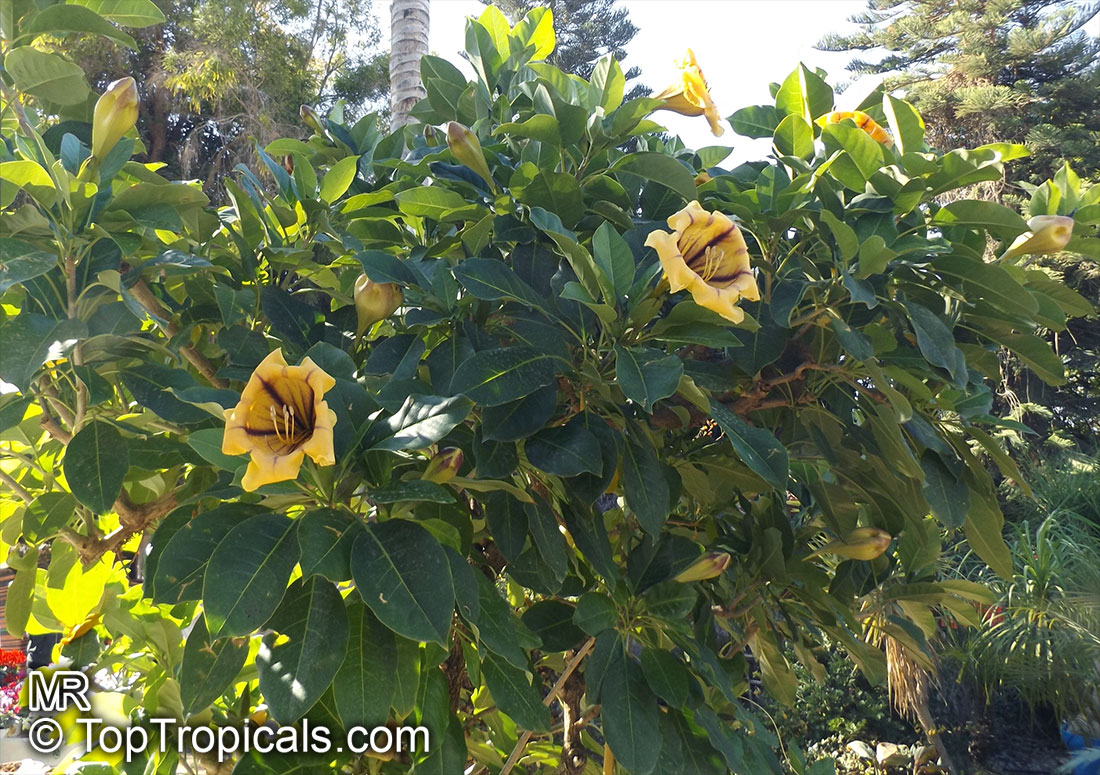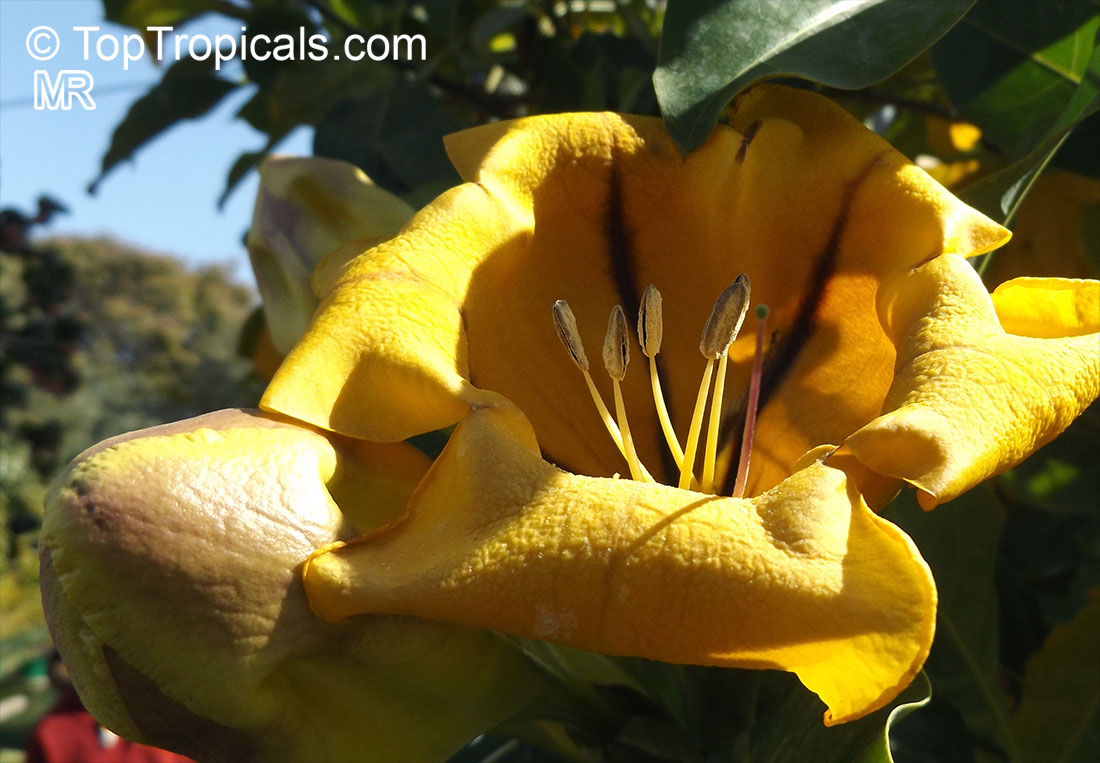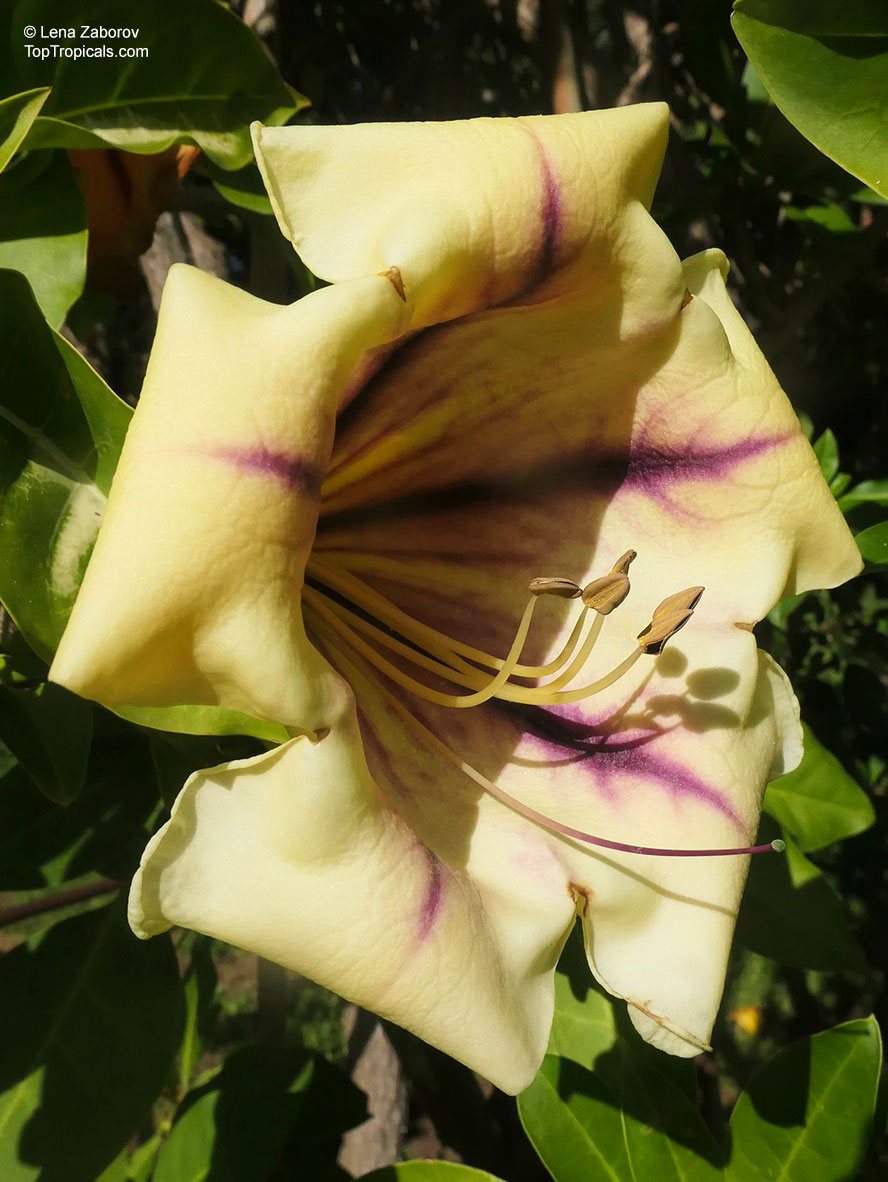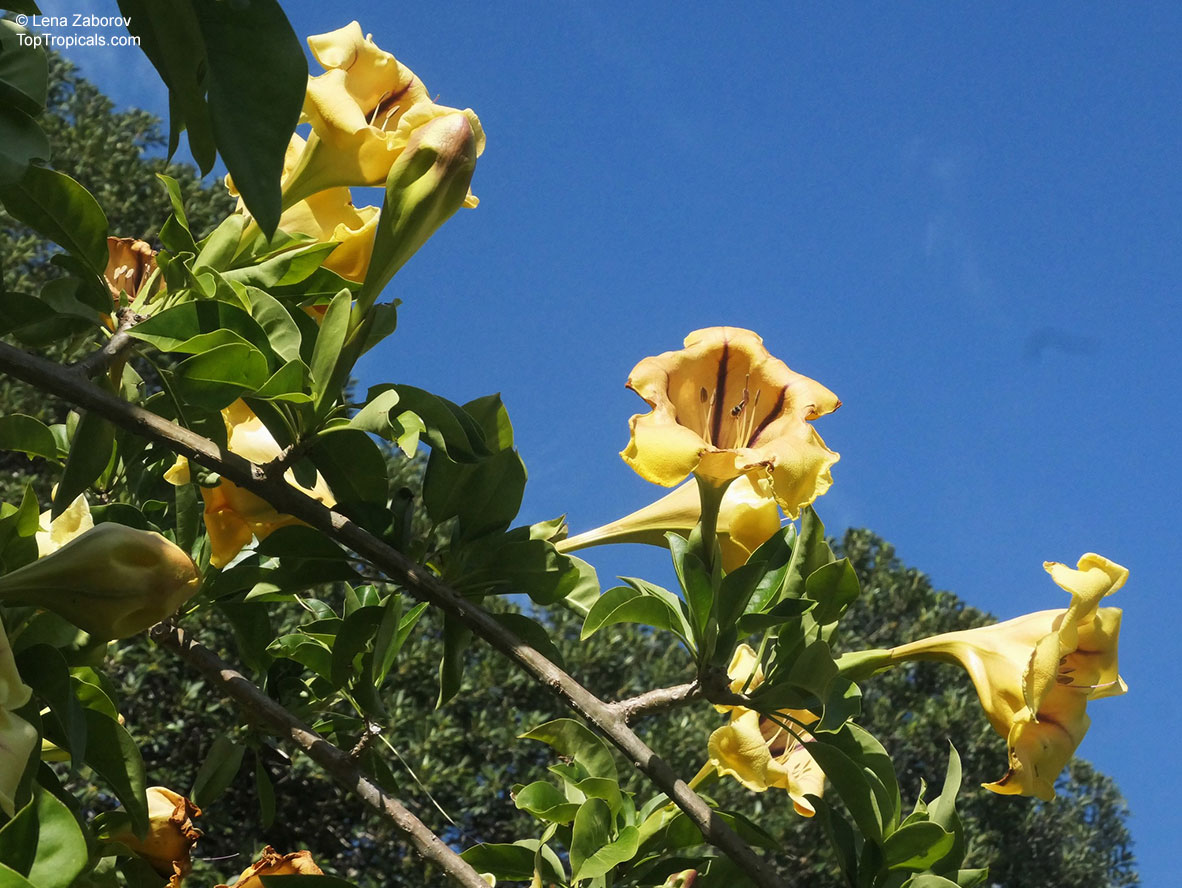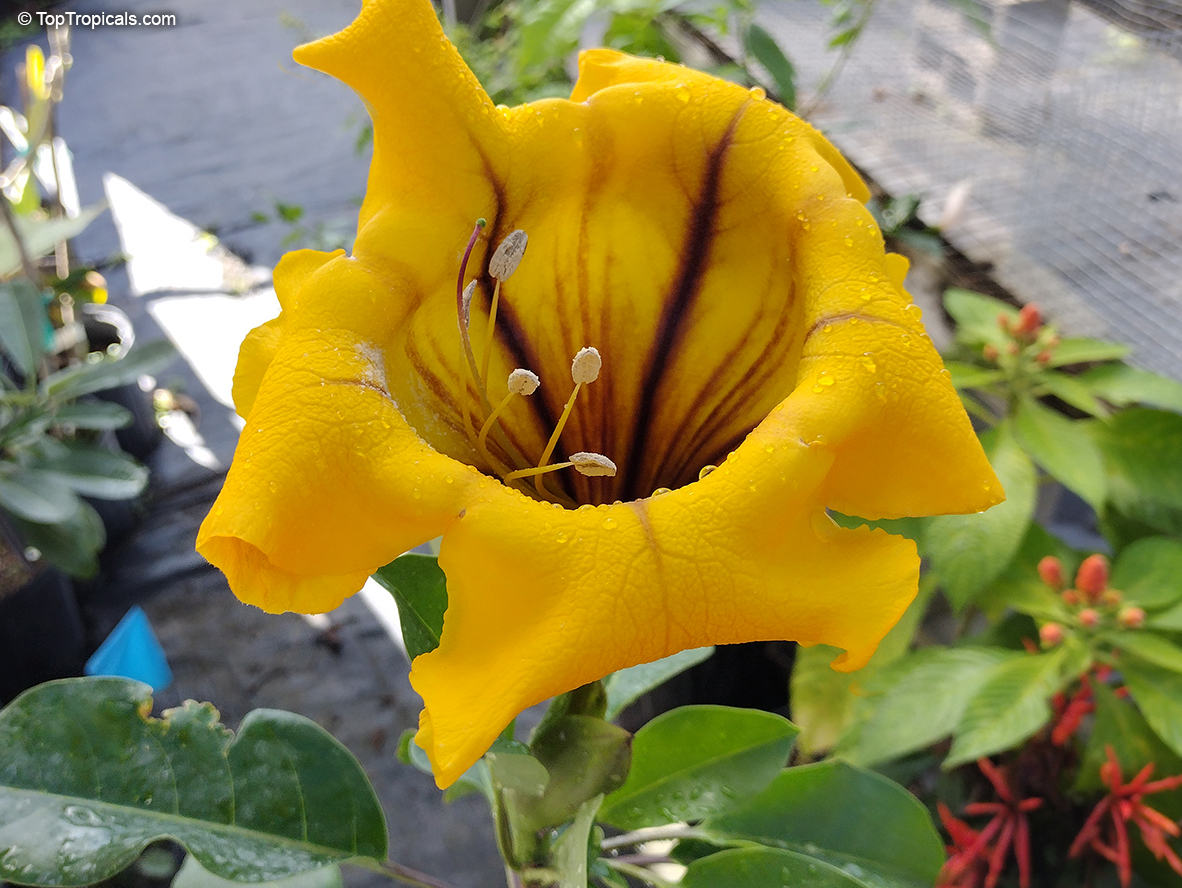Solandra maxima (Butter Cup)
Top Tropicals Plant Encyclopedia
Botanical names: Solandra maxima, Solandra hartwegii, Solandra selerae
Common names: Butter Cup, Gold Cup, Chalice Vine, Cup-of-Gold, Trumpet Plant
Family: Solanaceae
Origin: Mexico, Central America and northern South America












Thick stemmed tropical liana with large shiny leaves and large bell shaped golden yellow flowers. The thick and woody ropelike stems branch frequently and root at their nodes, and can run for more than 200', clinging with aerial rootlets and scrambling over everything in the way. The evergreen leaves are leathery, about 6" long and elliptic, with prominent lighter colored midribs and lateral veins. The flowers are truly spectacular, shaped like a chalice, 6-10" long, flaring open to 4-7" across. The five lobes of the corolla are reflexed, and each lobe is marked with a narrow purplish brown ridge on the inside. The flowers start out yellow and turn deeper golden as they age. They are fragrant, especially at night, with a scent reminiscent of coconut. Cup of gold blooms intermittently through the year, but mainly in the winter dry season. The fruits, rarely seen in cultivation, are round berries, about 2" in diameter. There are eight species of chalice vines, and they often are confused in the trade.Other species occur in the West Indies.
The 6-8 inch flowers are chalice shaped. They have a yellow corolla , with 5 purple lines. They bloom usually from February until May. Solandra maxima is the most common species in cultivation and vines offered as S. guttata and S. grandiflora may in fact be this one. The differences are subtle.
You can plant container plants at any time, but October is ideal, since it is a time of rapid growth. Plant near a wall, and water well. Use a slow release fertilizer in the fall.Cup of gold is a fast growing vine that thrives in most any well-drained soil. It tolerates severe pruning and blooms on new growth, so it can be cut back at any time of year. This is a heavy vine, and it requires a very sturdy support. Let the vine grow for a while, producing vigorous new shoots, then withhold water until the leaves begin to wilt. Hardiness: USDA Zones 10 - 11. Propagation: Cup of gold usually is propagated from stem cuttings taken in summer and rooted with bottom heat. Usage Cup of gold is often grown on large pergolas or trellises, or trained to grow up the side of a house where the spectacular flowers can spill down the walls over windows and doorways. Tolerant of salt spray and salty soils, all the chalice vines are excellent for seaside gardens. This is a large, rampant grower which requires plenty of space and a strong support. The chalice vines are related to the angel trumpets (Datura spp. and Brugmansia spp.), and like them, have hallucinogenic properties. They are used in sacred ceremonies in Mexico.
Poisonous Part: Leaves and flowers.
